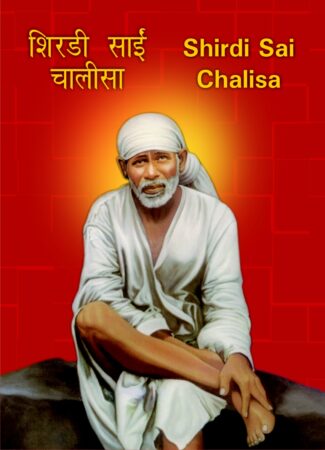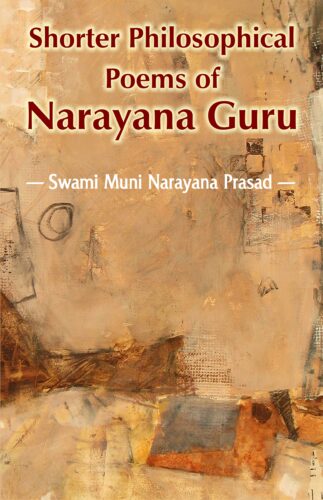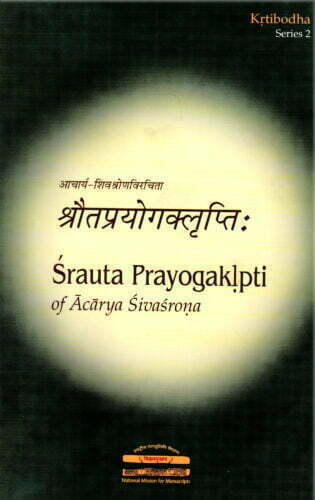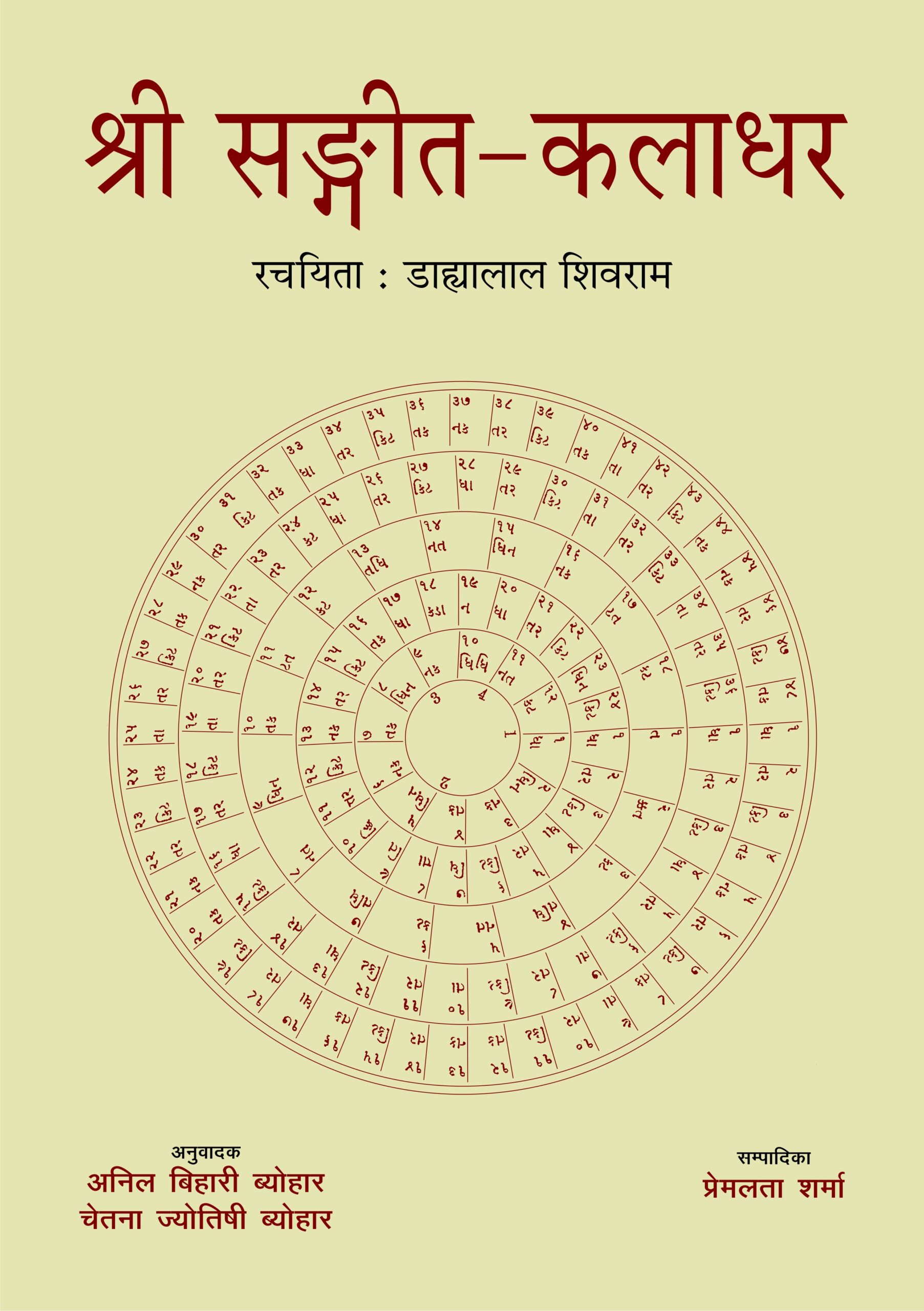Showing 811–820 of 1069 results
“प्रस्तुत ग्रन्थ “शक्ति उपासना” का वैभव राजानक महेश्वर राज़दान ने सायुज्य याेग के लिए शारदा लिपि के अन्तर्गत 126 दिव्य-नामावली के गुंथन में समर्पित किया है। चिन्मयी भैरवी के इस महामन् त्र काे ईश्वरस्वरूप स्वामी लक्ष्मण जी महाराज ने 1934 ईस्वी से संजाेए रखा अाैर तत्पश्चात् उनकी परम शिष्या याेगिनी शारिका देवी जी काे प्रदान किया। तत्पश्चात् सुश्री याेगिनी प्रभाजी ने इसे संजाेए रखकर देवनागरी लिपि में प्राेफेसर पुष्पजी से रूपान्तरित करवाकर महती कृपा की है। शक्ति उपासना के अन्तर्गत इच्छा, ज्ञान, क्रिया, शक्ति के नादानुसन्धान का उच्चारण क्रमिक है। चिन्मयी भैरवी शिव तथा शिवानी का एकात्म भाव स्वरूप है, अतः ित्रक शास् त्र की दृष्टि में सर्वाेपरि है, क्याेंकि सर्वव्यापी शक्ति विद्या-स्वरूपिणी है। प्रकाश तथा विमर्श सनातन शक्ति का ही प्रसार है। यामी शक्ति विश्वात्मिका हाेने के साथ अमृतेश्वरी का रूप धारण करके भक्ति, याेग तथा दैवी सम्पदा की अाेर स्फुरित हाेती है। अाद्या शक्ति चिन्मयी भैरवी निरन्तर स्फुरण करती है। शक्ति उपासना में ित्रपुर भैरवी श्रीप्रदा ज्ञान के द्वारा ज्ञाता के रूप में तथा ज्ञेय काे एक सूत्र में पिराेती हुई अमृत का पान कराती है। देवी का वरदान एवं सन्धिनी–ह्लादिनी शक्ति की अभय-मुद्रा उमा से कामेश्वरिप्रिया का प्रसार ही है। भुवन-मालिनी का रूप धारण करती हुई माेक्षप्रदा अमृतेश्वरी साधक के लिए ज्ञानाङ्ग एवं मन् त्र दीपिका है। शिव तथा शिवानी का एकात्मस्वरूप जानना मृत्यु से माेक्ष प्राप्ति का शाक्त अनुसन्धान है। “

The papers study aspects of Shamanic cosmology as found diffused in Eurasion environments, inquiring into Shamanic trance/ecstatic experience, the cosmos as viewed by the Shaman and his mysterious power among the spirits.
Is shaman a magical operator? Or could he be a psychic, an exorcist, a bio-energo- therapeutist, a fortune teller, an intermediary between the world of spirits and a human collectivity, a cultural hero, or just a mysterious, nameless person? Notwithstanding decades of extensive researches into the bewildering shamanic practices, we are still looking for a precise, acceptable description of this thaumaturge, called shaman leave alone a valid explanation of the baffling shamanic phenomena and, yet beyond, of its cosmology. What, then, is the shaman-linked ism: shamanism? Is it an infra-religion, a spirit- possession cult, or a religion in its own right? Or, how far is the shamanic cosmos directly involved in a religious cult? Addressing afresh these and other related questions, a group of eminent scholars from different European countries here tries to capture some of the highly gripping aspects of shamanic cosmology, diffused in varying Eurasian environments. This book is essentially the outcome of an International Symposium: October 1996, Venice, Italy. lncluding new investigative studies of both the traditional authentic shamanism and neo- shamanism, in diverse local situations: ranging from the frozen plains of Siberia to the jungles of Orissa, from the Himalayan valleys to the islands of Indonesia, the authors describe shamanic trance/flights/ecstatic experience; how a shaman envisions the true nature of the cosmos, beyond its trivial appearance; and how, through his mysterious power, he can move among the dead men, spirits and gods. An unbiased inquiry into the intriguing, yet heart-stirring, shamanic phenomena, it is certainly a work of absorbing interest to ethnologists, social/cultural anthropologists, shamanologists, historians of religion, and general readers alike.

In this book, alongside the 40 verses or chaalisa, are given their meaning in Hindi and their English translation. Sri Sai Baba aarati is also included.
In this book, alongside the 40 verses or chaalisa, are given their meaning in Hindi and their English translation. Sri Sai Baba aarati is also included.
The experiences and knowledge from our past are recorded in manuscripts which have been handed down to us over several thousand years. The Government of India, through the Department of Culture, took note of the importance of this vast tangible heritage and, in order to preserve and conserve as well as to make access to this wealth easy, established the National Mission for Manuscripts (NMM). In order to disseminate the knowledge content of manuscripts, the Mission has taken up several programmes such as lectures, seminars, and workshops. The Mission publishes the proceedings of the above-said programmes under the following series: “Samrakshika” (on conservation), “Tattvabodha” (comprising lectures based on manuscripts delivered by eminent scholars), Samikshika” (research-oriented papers presented in the seminars), and “Kritibodha” (transcribed and edited texts prepared at advanced level manuscriptology workshops conducted by NMM).
NMM has taken up a project for publishing rare and unpublished manuscripts in three forms: (a) facsimile, (b) critical edition with annotation, and (c) critical edition with translation. This series has been named as “Prakashika”.
This critically edited volume of the Shivajnanabodhabhashyam is a commentary by Shivagrayogin, an acclaimed authority on Shaiva Siddhanta, on the Shivajnanabodham of Meykandadeva, another great exponent of Shaivaism. It is the most authentic, canonical and methodical work on Shaiva Siddhanta. It stands as a mark of classical scholasticism in the Indian philosophical system. It is 39 in the Prakashika Series.

This book contains extensive commentaries on Narayana Guru’s five shorter philosophical poems The Science of the Absolute in Five Verses, Lamp of Non-duality, Consciousness, Chants for Oblations in Fire, and Ten Verses Addressed to God: A Universal Prayer. The poems elucidate the Vedàntic doctrine in terms of causality and the idea of Reality or atma being Consciousness in essential content.
The work collects Narayana Gurus most important shorter philosophic poems into one volume. They are respectively, the Brahmavidya Pancakam (Science of the Absolute), Advaita Dipika (Lamp of Non-Duality), Arivu (Consciousness Examined), Homa Mantram (Fire Oblation) and Daiva Dashakam (Ten Verses Addressing God). The verses are rendered into English and commented upon extensively by Swami Muni Narayana Prasad. Alongside the Gurus Atmopadesha Shatakam (One Hundred Verses of Self-Instruction) and the Darshana Mala (Garland of Visions), these poems are intended to transmit the wisdom of the Upanishads to the earnest seeker of the modern age. As a rishi of the modern age, Narayana Guru deals with issues pertinent today, including how social ethics and other contemporary problems are to be treated in light of the Absolute. As such, the Gurus poems may be said to be both ancient and modern at the same time.
Each poem contained in this book may be said to deal with a specific philosophical problem or a set of problems that may be encountered in the search for the Absolute. Each problem is consistently answered in light of the Absolute. Such elucidations include the prerequisites of both a true seeker and a true guru, the nature of the rapport to be established between each, and how the Absolute is sat, cit and ananda together. Other elucidations include the ultimate nature of Reality examined in terms of Consciousness, how Vedic ritual may be understood properly so that it may lead one to the highest realm of non-dual wisdom, and how to pray to God in the Absolutist sense.

The book is a Shrauta-Prayoga text, which deals with the sequence and procedures of the Shrauta- sacrifices. It also explains many technical ritualistic terms in accordance with their usage in Vadhula-tradition, focusing on the performance of the rituals with accuracy.
The Prayogaklpti, as its nomenclature indicates, is a Shrauta-Prayoga-text, dealing with the sequence and procedures of the Shrauta-sacrifices, viz. Agnyadheya, Darshapurnamasyeshti, Chaturmasya, Pashubandha, Jyotishtoma and Agnishtoma in six Prapathakas respectively, as prevalent in the Vadhula tradition. The author of the text is Acarya Shivashrona, a versatile exponent of the Shrauta tradition. At places he explains many technical ritualistic terms in accordance with their usage in the Vadhula tradition. He gives very much stress on the performance of the rituals with accuracy in accordance with the Vadhula tradition, after having consultation with experts in this matter. He often quotes the views of other Acharyas not by names but using the phrases like iti kecit, ityanye, ityeke, and so on.
This text has been edited for the first time on the basis of three MSS deposited in the Government Oriental Manuscript Library, Chennai; Adyar Library, Chennai; and Oriental Institute, M.S. University, Baroda, by an eminent Vedic Scholar like Prof. B.B. Chaubey who has already edited many other texts of this tradition like Vadhula-Shrautasutra, Vadhula-Anvakhyana, Vadhula Kalpagamavrttirahasya, Vadhµla-Yajnaprayashcitta, Vadhula-Smriti and also the Ashvalayana Samhita of the Rigveda for the first time.
The text is appended with three important indexes, viz. glossary of technical terms, mantras quoted in the text, and complete word-index.

Invoking Lord Hanumana for his blessings for the sake of knowledge, strength and wisdom in general and for the mitigation of difficult situations in particular, is a common practice among devout Hindus. As per belief and practice the solution lies in the recital of Hanuman Chalisa.
The Small, hard-bound hand-book, running into 64 pages, reproduces each and every stanza of the Hanuman Chalisa in original, with easy-to-understand Hindi translation. What is outstanding about the publication are the colourful, full-page visuals (artworks) depicting the super-mundane, mythological episodes related to the Mahabali, Veer Hanumana as the saviour and the ever-dependable Lord of the true devotees.
Invoking Lord Hanumana for his blessings for the sake of knowledge, strength and wisdom in general and for the mitigation of difficult situations in particular, is a common practice among devout Hindus. As per belief and practice the solution lies in the recital of Hanuman Chalisa.
The Small, hard-bound hand-book, running into 64 pages, reproduces each and every stanza of the Hanuman Chalisa in original, with easy-to-understand Hindi translation. What is outstanding about the publication are the colourful, full-page visuals (artworks) depicting the super-mundane, mythological episodes related to the Mahabali, Veer Hanumana as the saviour and the ever-dependable Lord of the true devotees.

For hundreds of years the devout Hindus have been invoking Lord Hanumana for his blessings by reciting Hanuman Chalisa for overcoming difficulties and diverse situations as also for strength, knowledge and wisdom.
This unique hard-bound beutifully illustrated booklet ‘Hanuman Chalisa’ offers readers the original couplets with transcription and translation into easy to understand English and Hindi. An unusual feature of the 112 page booket are the full-page colourful visuals (artworks) on almost every alternate page depicting various famous episodes of the evil-fighting, devotee-loving Lord Hanumana.
For hundreds of years the devout Hindus have been invoking Lord Hanumana for his blessings by reciting Hanuman Chalisa for overcoming difficulties and diverse situations as also for strength, knowledge and wisdom.
This unique hard-bound beutifully illustrated booklet ‘Hanuman Chalisa’ offers readers the original couplets with transcription and translation into easy to understand English and Hindi. An unusual feature of the 112 page booket are the full-page colourful visuals (artworks) on almost every alternate page depicting various famous episodes of the evil-fighting, devotee-loving Lord Hanumana.

This book was written by an unusual royal court poet of Bhavanagar (Gujarat) between 1885 and 1900. It benefits those readers, music lovers and singers who are interested in having knowledge of our ancient musicology. This book tries to project the style and suras prevalent from ancient to the modern times, and is a very useful guide for the music critics.
This book was written by an unusual royal court poet of Bhavanagar (Gujarat) between 1885 and 1900. It benefits those readers, music lovers and singers who are interested in having knowledge of our ancient musicology. This book tries to project the style and suras prevalent from ancient to the modern times, and is a very useful guide for the music critics.

Suparnadhyaya is a later Vedic versified short play portraying the story of the incredible dexterity and strength of Garuda and his wondrous deed of bringing soma (amrita), from Indras heaven for the sake of Snakes, after defeating Indras guards and ridiculing his divine weapon.
The experiences and knowledge from our past are recorded in manuscripts which have been handed down to us over several thousand years. The Government of India, through the Department of Culture, took note of the importance of this vast tangible heritage and, in order to preserve and conserve as well as to make access to this wealth easy, established the National Mission for Manuscripts (NMM). In order to disseminate the knowledge content of manuscripts, the Mission has taken up several programmes such as lectures, seminars and workshops. The Mission has published the proceedings of the above-said programmes under the following series: Samrakshika (on conservation), Tattvabodha (comprising lectures based on manuscripts delivered by eminent scholars), Samikshika (research-oriented papers presented in the seminars), and Kritibodha (transcribed and edited texts prepared at advanced level manuscriptology workshops conducted by NMM.
NMM has taken up a project for publishing rare and unpublished manuscripts in three formats (a) Facsimile, (b) Critical edition with annotation and (c) Critical edition with translation. This series has been named as Prakashika. Suparnadhyaya critically edited by Prof. G.C. Tripathi comes under this Prakashika series.
Suparnadhyaya, Suparnadhyanam or simply Sauparnam is a later Vedic text of Indian dramatic tradition, lesser known to scholars primarily due to the fact that it was never translated into English language. This play, normally enacted during the festival of Indradhvaja, has a plot which is woven around the story of the incredible dexterity and strength of Garuda and his wondrous deed of bringing soma (amrita) from Indras heaven for the sake of Snakes, after defeating Indras guards and ridiculing his divine weapon. This story finds a mention even in Mahabharata. This short play is in a metrical form, interspersed with occasional prose-pieces.
This text has come down to us in an incorrect form due to faulty manuscript tradition. In this volume, the author has tried to restore the text with the help of higher textual criticism and has given due justification for his amendments. It presents the text with English and Hindi translations for the benefit of those readers who are not conversant with Sanskrit.